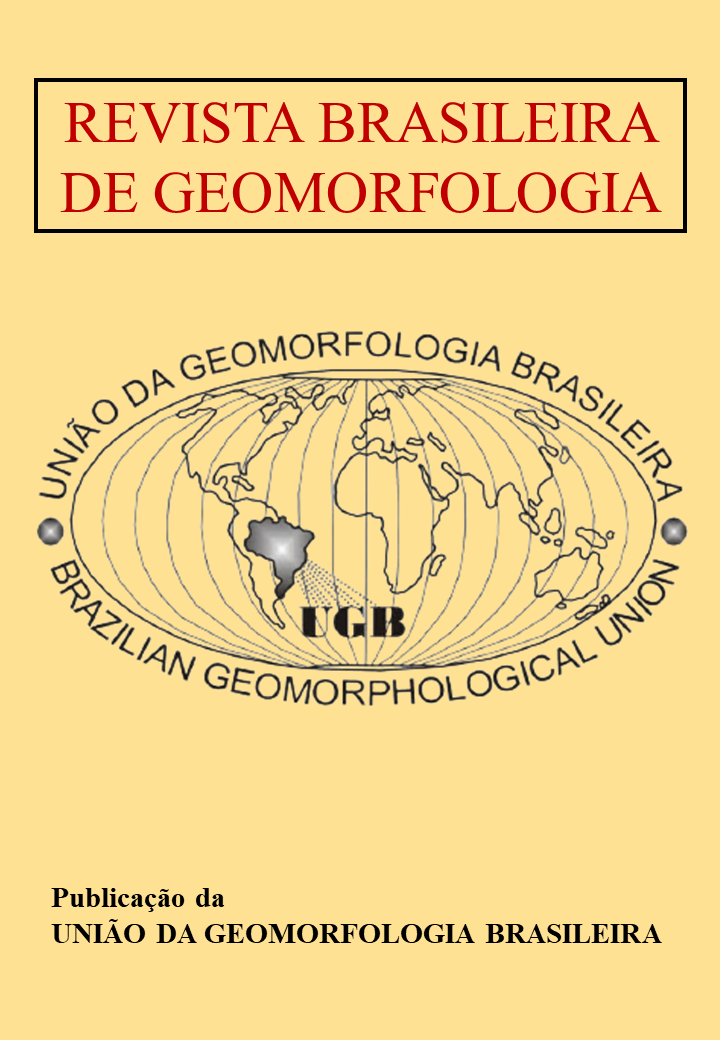Revista Brasileira de Geomorfologia (Brazilian Journal of Geomorphology): Past, Present, and Future
DOI:
https://doi.org/10.20502/rbg.v26i4.2734Keywords:
Bibliometrics, Geomorphology, RBGeomorfologia, Bibliographic productionAbstract
This article analyzes the publications of the Revista Brasileira de Geomorfologia (RBGeomorfologia) between 2000 and 2024, assessing temporal evolution, affiliation profiles, collaboration networks, and thematic areas. The methodology also involves a bibliometric analysis of data manually collected from the official website, such as the Web of Science and Scopus databases, covering data of published documents like titles, abstracts, and keywords. Publications were grouped into subareas and subjected to quantitative analysis to determine their representativeness. The results reveal a progressive increase in articles incorporating new approaches and attention to environmental issues. Among the subareas, Environmental Geomorphology leads, followed by Modeling and Geoprocessing, and Fluvial Geomorphology. Areas such as Tectonic Geomorphology, Quaternary Geomorphology, and Geochronology show lower participation because of high technical demands and the need for greater investment. The analysis of indexed databases indicated an average of 2.7 citations per document and collaboration with institutions from 12 countries, notably France and Portugal. The study highlights a mismatch in emerging areas such as Geodiversity and Geomorphological Heritage, which are represented in a few publications. It is concluded that RBGeomorfologia has been consolidating national geomorphological research and expanding its international visibility. However, it is recommended that the topics addressed be diversified and that underrepresented subareas be strengthened.
Downloads
Downloads
Published
How to Cite
Issue
Section
License

This work is licensed under a Creative Commons Attribution-NonCommercial 4.0 International License.
Author (s) retain copyright and grant the journal right of first publication with the work simultaneously licensed under the Creative Commons Attribution License that allows sharing the work with recognition of its initial publication in this journal.








